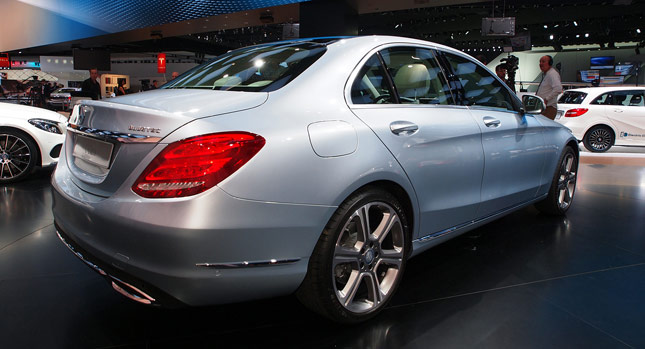The all-new Mercedes-Benz C-Class is up to 100 kg (220 lbs) lighter than the model it replaces and one of the elements contributing to the weight saving is the smaller fuel tank. Standard C-Class models are offered with a 41-liter (10.8-US gallon) fuel tank, similar in size or even smaller than what superminis are offering nowadays.
The C-Class’ relatively tiny fuel tank is said to contribute to as much as 16 percent of the average 75 kg saved by the new W205 generation.
By shrinking the standard fuel tank by 18 liters (4.75 gallons), Mercedes-Benz has reduced the official curb weight of the C-Class by 12 kg (26.4 lbs). In the EU, a car’s official curb weight is calculated using a fuel tank filled to 90 percent of its capacity, as well as an additional 75 kg (165 lbs) for the driver.
While weight saving is great news for fuel economy and handling, is it really a good idea to offer a smaller fuel tank? Apparently, Mercedes-Benz believes it is. “We have reduced the fuel tank capacity of the new C-class roughly in line with the fuel savings it offers over its predecessor. For those customers who place a priority on range, we offer an optional 66-liter tank,” a company spokesman was quoted as saying by Autocar.
In Germany, Mercedes-Benz charges €59.50 ($81) for the optional 66-liter (17.4-gallon) tank. In the UK, however, the C-Class will be offered as standard with the larger tank, although official figures will be quoted from the European standard and the 41-liter tank.
The most economical C-Class currently on offer in Europe, the C 220 BlueTec, has a declared average fuel consumption of 4 l/100 km (58.8 mpg US), which means it ideally has a driving range of 1,025 km (637 miles) with the 41-liter fuel tank. However, official fuel economy figures are always more optimistic than real ones. Choose the C 200 petrol model that averages 5.3 l/100 km and driving range drops significantly to 773 km (480 miles). And that’s still a fuel-efficient model we’re talking about…
By Dan Mihalascu
PHOTO GALLERY








